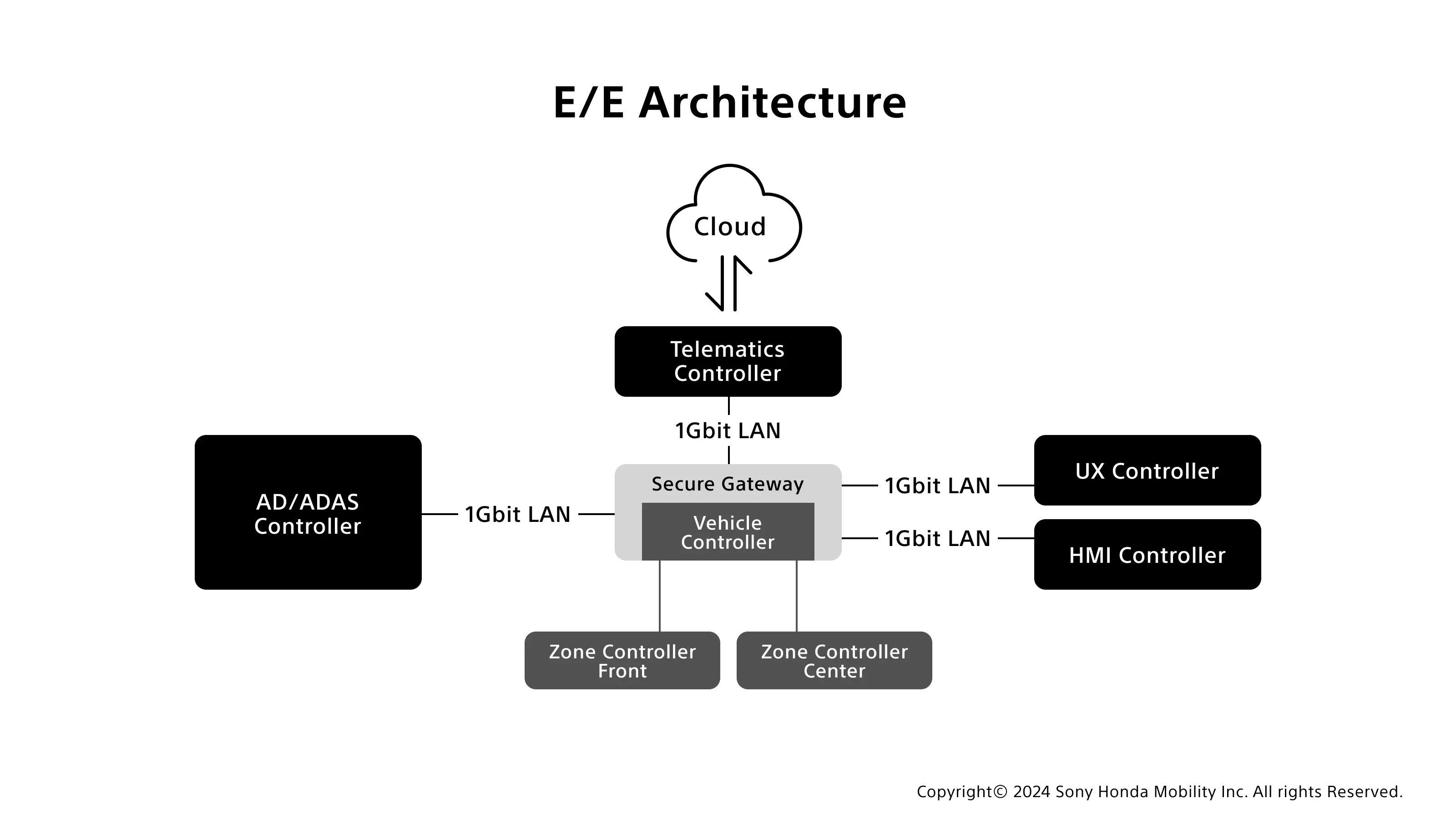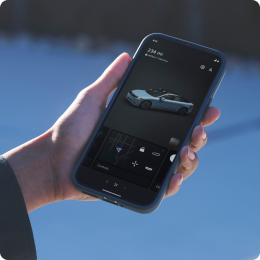AFEELA: E&E Architecture for the Future.

E&E architecture refers to the design and structure of electrical and electronic systems connecting automobile control units and sensors. Software-defined vehicle development relies on continuous over-the-air updates. As vehicles become more sophisticated and the complexity of connecting and controlling electronic control units increases, E&E architecture development is essential.
Therefore, Sony Honda Mobility strives to develop architecture without hardware limitations, preparing for the future of automotive experiences. Alongside advanced architecture, cutting-edge SoC specs are more important than ever.
AFEELA’s E&E Architecture
The next-generation E&E Architecture is shifting towards a streamlined structure for vehicles and their systems by integrating and consolidating the software that controls various functions into a single ECU. This approach allows for the behavior of the car to be modified through updates to just one aggregated ECU without the need to individually rework each ECU during functional improvements. It also underlies the potential to reduce the physical wiring harnesses that connect ECU and devices.
There are three broad conceptual designs in E&E Architecture: Domain, Zone, and Central Architectures. Currently, the architecture of Self-Driving Vehicles (SDV) is transitioning from Domain Architecture to Zone Architecture.
Tesla, the industry leader, uses an integrated central architecture. However, zone and central architecture combined will be the key to the future of self-driving vehicles from OEMs. AFEELA is exploring the best those architecture for improved efficiency.

Sony Honda Mobility, Driven to Provide Future Experiences
Embedded within these architectures, the intent of Sony Honda Mobility (SHM) is particularly housed in two pivotal realms: In-Vehicle Infotainment (IVI) and Autonomous Driving/Advanced Driver Assistance Systems (AD/ADAS).
All use Qualcomm Technologies’ System on Chip (SoC) Snapdragon® Digital Chassis™. Computational performance boasts the highest specs of any in its time, this chip reaches computational performances up to 800 TOPS — more powerful than other OEMs.
Why are top-of-the-line specs necessary? The future of E&E requires a system that minimizes the risk of functional improvement limitations due to hardware constraints like SoC processing capacity. While improving vehicle performance via software updates, hardware processing could stall development — which might affect the evolution of automated driving. We all know from computers and smartphones that technology develops rapidly with limitations destined to come eventually, so it’s important to predict these hiccups. Therefore, Sony Honda Mobility will develop E&E, looking further into the future to load the highest specs that support AFEELA and its co-creation platform.
Thinking Ahead for Beyond-the-Car Experiences
Sony Honda Mobility strives to offer experiences that transcend the car by developing a platform for co-creative expression through AFEELA. Hardware enhancements are fundamental to future car experiences and the expansion of self-driving vehicles, so to drive E&E development, the company uses the world’s highest-spec neural networks.
However, hardware limitations are a real challenge for the future of self-driving vehicles and E&E. The ideal architecture maximizes cloud implementation, reduces (vehicle side) edge computing loads, and enables continuous evolution. Sony Honda Mobility has made looking into this future a part of its identity.
Interviewer: Takuya Wada
Writer: Asuka Kawanabe
Related





